The Economics and Statistics Division maintains archives of previous publications for accountability purposes, but makes no updates to keep these documents current with the latest data revisions from Statistics Canada. As a result, information in older documents may not be accurate. Please exercise caution when referring to older documents. For the latest information and historical data, please contact the individual listed to the right.
<--- Return to Archive
For additional information relating to this article, please contact:
November 18, 2020HIGH INCOME TRENDS AMONG CANADIAN TAXFILERS, 2018 Statistics Canada has released the latest trends for high income earners in Canada: the top 0.01 per cent, the top 0.1 per cent, the top 1 per cent, the top 5 per cent, the top 10 per cent and the top 50 per cent. The latest data are from the 2018 taxation year.
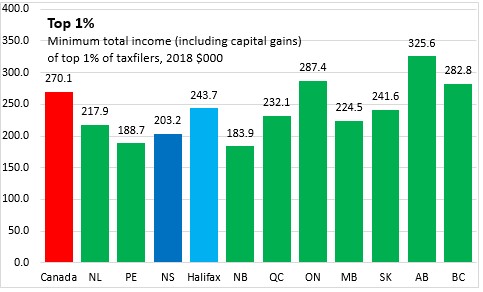
The threshold for the top 1 per cent of tax filers varies from Province to Province and from City to City. In Canada, those reporting total income (including capital gains) over $270,100 in 2018 represent the top 1 per cent of taxfilers. In Nova Scotia, there are fewer individuals with higher incomes and the threshold of the top 1 per cent was $203,200. In Halifax, the threshold of the top 1 per cent of earners was $243,700.

The top 5% of Canadian taxfilers had total income (including capital gains) of $131,400. In Nova Scotia, the top 5% of taxfilers had income of at least $113,600.
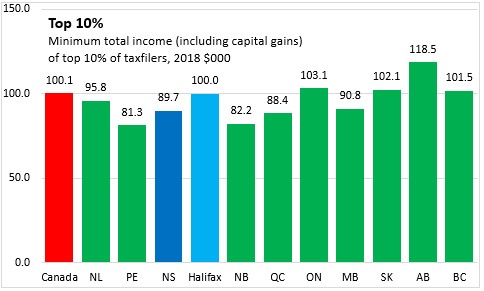
The top 10% of taxfilers in Canada had total income (including capital gains) of $100,100. For Nova Scotia, the top 10% of taxfilers had income of $89,700 or more.
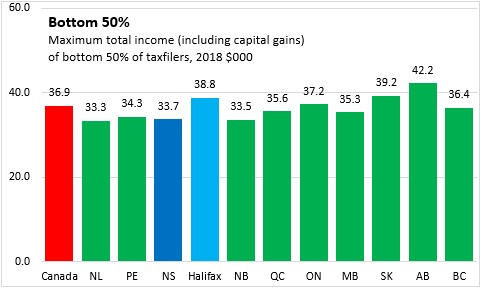
The maximum total income (including capital gains) of the bottom 50% of taxfilers was $36,900 in Canada and $33,700 in Nova Scotia.
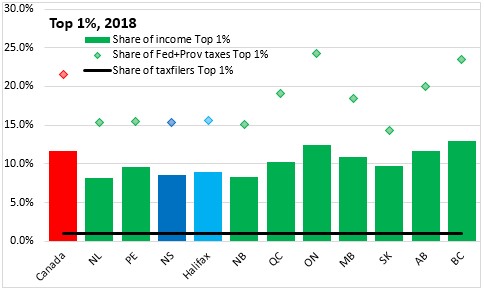
The top 1% of earners in Canada accounted for 11.7% of the total income (including capital gains) reported in 2018. In comparison, the bottom 50% of taxfilers accounted for 17.5% of total income. In Nova Scotia, the top 1% accrues a lower share of total income than the national average: 8.5%, while the bottom 50 per cent receives a higher share of total income than the national average: 19.0%. Across Provinces, there is some variation in the share of total income accounted for by the top 1% of filers - with the highest shares reported in Ontario and British Columbia (note that each province has a different threshold that defines the top 1 per cent).
In general, those with the highest income bear a larger portion of Federal and Provincial income taxes than their shares of income. Across Canada, those in the 50th through 90th percentiles of income earners (including capital gains) pay a somewhat lower portion of combined Federal and Provincial income taxes than their share of income. Those in the bottom 50% of taxfilers earn a disproportionately lower portion of total income, but pay an even lower share of combined Federal and Provincial taxes.
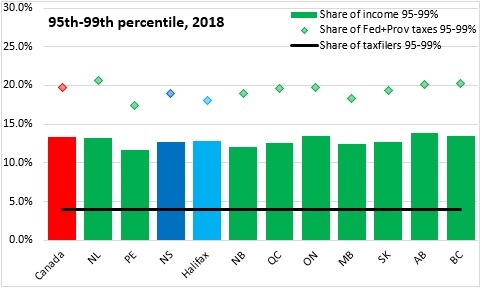
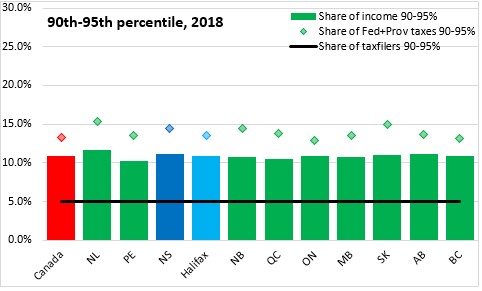
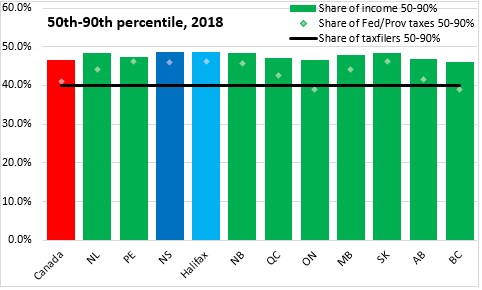

In the last year, there was an increase in the share of Canadian income for the top 1%. There were decreases in the share of income for the 95th-99th percentile as well as the 50th-90th percentiles. The share of income for the 90-95th percentiles was stable and the share of income was up for the bottom 50 per cent in 2018. in Nova Scotia, there was an increase in the share of Canadian income for the top 1% and 95-99th percentiles. The share of income was stable for the 90-95th percentiles and down for the bottom 50%.
Over the period 1982-2018, the share of income accruing to the highest earners (top 1%, 95-99th percentile) has risen, though the portion of Federal and Provincial income taxes paid by these groups has risen even faster. The share of income accruing to the 90-95th percentiles of earners has been relatively stable while the share of taxes paid by this group has declined at both a national and provincial level. The share of incomes for the 50-90th percentiles has declined over the 1982-2018 period, but the share of taxes paid by these groups has fallen faster. In Nova Scotia, the share of income earned by the bottom 50% of taxfilers has risen over the last 20 years, but remains below levels reported in the late 1980s. The national share of income among the bottom 50% of taxfilers has risen more slowly after declining through the 1990s.
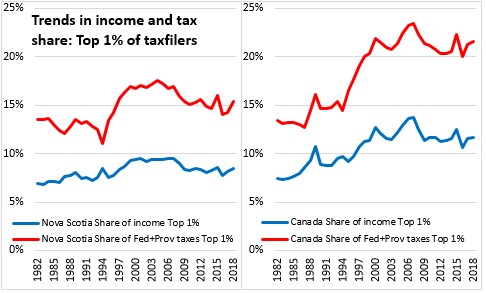
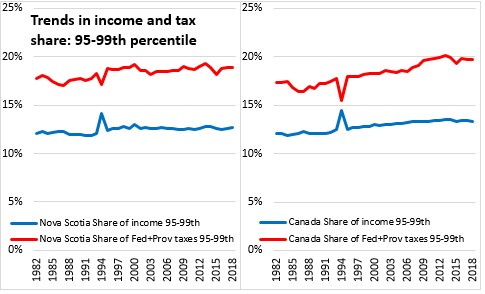

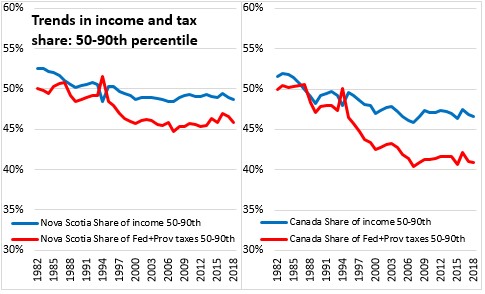
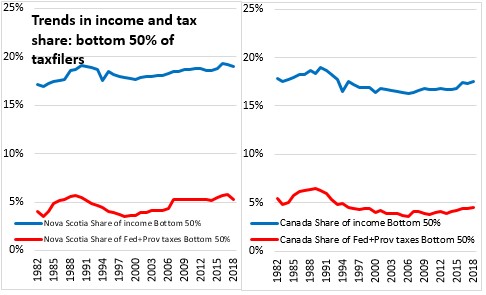
Note: Total income consists of income from earnings, investments, pensions, spousal support payments and other taxable income plus government transfers and refundable tax credits. Federal Income taxes are derived from line 420 of the federal income tax return and exclude the Quebec abatement.
Sources:
Statistics Canada. Table 11-10-0054-01 Federal and provincial individual effective tax rates
Statistics Canada. Table 11-10-0056-01 High income tax filers in Canada, specific geographic area thresholds
<--- Return to Archive